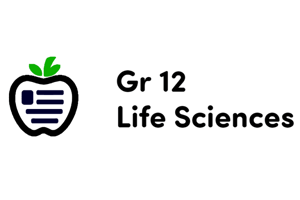Podcast
Questions and Answers
What deficiencies arise from the reductionist approach to dividing brain functions?
What deficiencies arise from the reductionist approach to dividing brain functions?
- It overemphasizes the role of sensory functions.
- It accurately represents the dynamic nature of cognition.
- It ignores the interactions between different brain functions. (correct)
- It complicates the understanding of the limbic system.
Which part of the brain is particularly associated with forward planning and decision making?
Which part of the brain is particularly associated with forward planning and decision making?
- Parietal lobe
- Frontal lobes (correct)
- Occipital lobe
- Temporal lobe
What is emphasized as important for understanding complex brain functions in humans compared to animals?
What is emphasized as important for understanding complex brain functions in humans compared to animals?
- The simplicity of brain structure in humans
- The uniformity of brain functionality across species
- The psychological and psychiatric disorders (correct)
- The genetic similarity between species
What role do the temporal-parietal-occipital association areas play in the brain?
What role do the temporal-parietal-occipital association areas play in the brain?
What is a consequence of recent developments in functional brain imaging?
What is a consequence of recent developments in functional brain imaging?
What is the primary role of the brain in the body?
What is the primary role of the brain in the body?
What concept does the term 'neurobiology' encompass?
What concept does the term 'neurobiology' encompass?
Where does the development of the vertebrate nervous system originate?
Where does the development of the vertebrate nervous system originate?
How are neuronal cells characterized in the context of lifespan?
How are neuronal cells characterized in the context of lifespan?
What is the primary function of the spinal cord as described?
What is the primary function of the spinal cord as described?
What is a significant function of the brain related to consciousness?
What is a significant function of the brain related to consciousness?
Which structure connects the third ventricle to the fourth ventricle?
Which structure connects the third ventricle to the fourth ventricle?
What is the role of the brainstem?
What is the role of the brainstem?
What developmental structure forms the spinal cord?
What developmental structure forms the spinal cord?
What happens in cases of irreversible loss of brainstem function?
What happens in cases of irreversible loss of brainstem function?
Which of the following disorders could arise from problems in the nervous system?
Which of the following disorders could arise from problems in the nervous system?
Which nerve functions are after emergence from the brainstem?
Which nerve functions are after emergence from the brainstem?
What is the significance of the 'brain vesicles' during development?
What is the significance of the 'brain vesicles' during development?
How does the spinal cord interact with sensory information?
How does the spinal cord interact with sensory information?
What is the primary function of the pons in relation to the cerebellum?
What is the primary function of the pons in relation to the cerebellum?
Which part of the nervous system operates autonomously in basic reflexes?
Which part of the nervous system operates autonomously in basic reflexes?
What connects the two cerebral hemispheres in the adult human brain?
What connects the two cerebral hemispheres in the adult human brain?
Which type of cortex is primarily responsible for processing information of one sensory modality?
Which type of cortex is primarily responsible for processing information of one sensory modality?
What is the characteristic structure of most of the neocortex?
What is the characteristic structure of most of the neocortex?
What is the function of the basal ganglia in the brain?
What is the function of the basal ganglia in the brain?
What is the primary role of the cerebellum in vertebrates?
What is the primary role of the cerebellum in vertebrates?
Which area has a relatively simple structure with only three layers and is linked to memory?
Which area has a relatively simple structure with only three layers and is linked to memory?
Which part of the brain is known as the smallest brain division in mammals?
Which part of the brain is known as the smallest brain division in mammals?
What defines the function of association cortex in the human brain?
What defines the function of association cortex in the human brain?
Which areas of the cerebral cortex are important for cognitive abilities and contain structures unique to humans?
Which areas of the cerebral cortex are important for cognitive abilities and contain structures unique to humans?
What functions are primarily handled by the thalamus?
What functions are primarily handled by the thalamus?
What is the general role of the amygdala in the human brain?
What is the general role of the amygdala in the human brain?
What distinguishes the cerebral hemispheres in mammals?
What distinguishes the cerebral hemispheres in mammals?
What is a major role of the hypothalamus in the brain?
What is a major role of the hypothalamus in the brain?
How do the superior and inferior colliculi function in mammals?
How do the superior and inferior colliculi function in mammals?
Which part of the forebrain is largely involved in connections between the thalamus and cerebral cortex?
Which part of the forebrain is largely involved in connections between the thalamus and cerebral cortex?
What is the primary function of the colliculi in non-mammalian vertebrates?
What is the primary function of the colliculi in non-mammalian vertebrates?
Flashcards are hidden until you start studying
Study Notes
Brain Structure & Function
- Brain acts as the body's information processor, receiving sensations, generating responses, and controlling bodily systems.
- The brain is the seat of learning, consciousness, personality, emotions, and decision-making.
- Human brain development begins with the embryonic ectoderm, forming a neural tube that eventually develops into the spinal cord and brain.
- The brain is comprised of three main parts: the forebrain, midbrain, and hindbrain.
Spinal Cord
- The spinal cord contains neurons and fibers connecting to the brain, controlling movement through somatic motoneurons and sympathetic preganglionic neurons.
- It receives somatosensory and visceral afferent information, sending it to the brain and generating reflexes.
- In mammals, the spinal cord is primarily subordinate to the brain, though it can act autonomously in some functions.
Brainstem
- The brainstem consists of the hindbrain (medulla & pons) and the midbrain.
- All cranial nerves except the olfactory and optic nerves emerge from the brainstem.
- The brainstem manages basic autonomic functions and controls the overall activity of the forebrain.
- The medulla oblongata contains major regulatory systems for the body and can maintain essential functions in the absence of a forebrain.
- The pons connects to the cerebellum via fiber bundles, contributing to movement control and learning.
Cerebellum
- The cerebellum is found in all vertebrates and grows in size with evolution.
- It plays a major role in movement control, especially learning and planning complex movements.
- Debate exists about its potential contribution to non-motor functions, such as cognition.
Midbrain
- The midbrain is the smallest brain division in mammals.
- The superior and inferior colliculi are involved in processing visual and auditory information, respectively.
- In non-mammalian vertebrates, these areas are the primary processing centers for these senses.
- In mammals, they contribute to rapid movement responses and pre-cerebral sensory processing.
Forebrain
- The forebrain consists of the diencephalon and telencephalon.
- The diencephalon includes the thalamus and hypothalamus.
- The hypothalamus regulates homeostasis, controlling the endocrine and autonomic nervous systems and driving motivated behavior.
- The thalamus is integral to sleep and wakefulness, as well as attention and motivation.
- The cerebral hemispheres, the largest part of the brain in mammals, contain incredibly complex circuitry responsible for intelligence and consciousness.
- The two hemispheres are interconnected via the corpus callosum.
- The cerebral cortex is divided into distinct areas specialized for different functions.
- The neocortex, with six layers, processes sensory information and generates motor output.
- Association cortex integrates information from different modalities and is responsible for complex functions such as cognition.
- Other forebrain structures, like the basal ganglia and amygdala, are associated with learned movement and emotional response, respectively.
Brain Systems
- Lectures cover sensory systems, motor systems, development, regeneration, motivation, and arousal.
- Systems are interconnected, with sensory and motor functions overlapping.
- Complex functions like emotion, motivation, learning, memory, and cognition involve distributed cortical functions.
- The course divides at this point, with differing emphasis on animal behavior and human behavior.
- The frontal lobes, particularly in humans, are involved in planning and decision-making.
- Temporal-parietal-occipital association areas are associated with perception, language, and other cognitive functions.
- It is important to understand how these complex functions operate in both humans and animals.
Studying That Suits You
Use AI to generate personalized quizzes and flashcards to suit your learning preferences.





